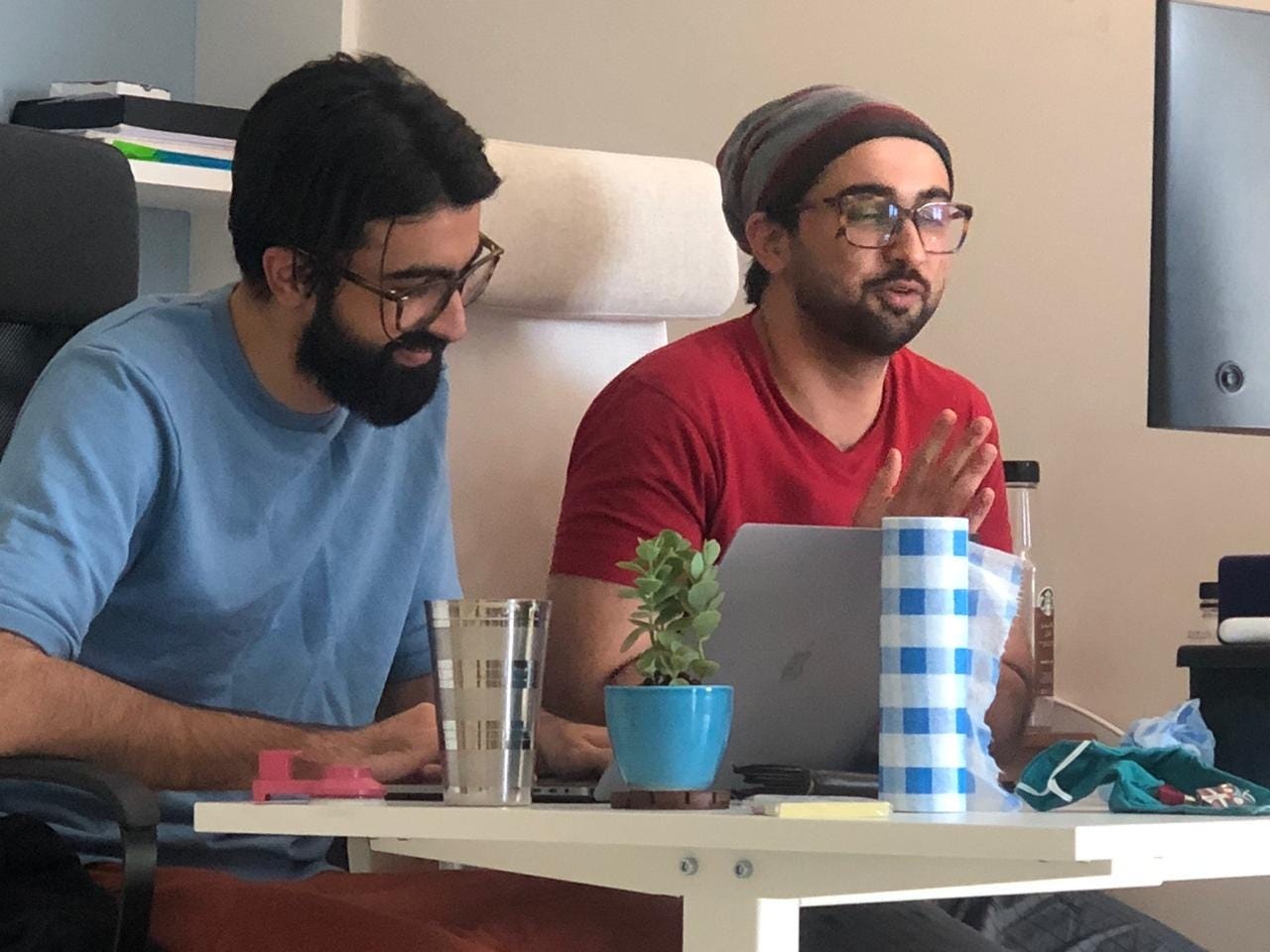How Enterpret Grows: The Deep Dive
How an AI startup founded by two brothers from India is breaking into the world of product software - results from 10 exclusive interviews
Enterpret has managed to snag customers like Notion, Figma, and Canva.
Ever since I started using the tool at Apollo.io, I’ve been curious about its story, how it builds product, and its go-to-market motion.
But I could never find any of that content! Despite having raised capital from Kleiner Perkins and Sequoia Capital. And even being an AI startup before it was cool.
So when they reached out about advertising in the newsletter, I had a different suggestion: what if you give me access to your team and customers?
And that brings us to today’s unsponsored deep dive.
Today’s Post
Words: 2,938 | Est. Reading Time: 13 mins
I’ve interviewed 6 members of the Enterpret team - including both co-founders, heads of product and marketing - as well as 4 customers to bring you the web’s deepest dive into Enterpret:
The Story of Enterpret
🔒 How Enterpret builds Product
🔒 Enterpret’s Sales-Led-Growth Motion
If you only have 1 minute, here’s what you can learn from Enterpret…
Your work gaps could be your next product: After gigs at Amplitude and Scale.AI, Varun Sharma saw a problem with a clear solution. So he started a company about it.
A model for AI product development: Enterpret’s modified Linear method emphasizes iterative solutions through POCs in a way that exemplifies how to build great AI products.
Using sales to build for PLG companies: Although one of the key groups that uses Enterpret is PLG companies, Enterpret itself is sales-led - and a model of doing it in the early stages.
1. The Story of Enterpret
How do you create a category? That’s the story of Enterpret.
Hear it from the CEO himself:
And here’s what else I learned by piecing together a bunch more interviews and stories:
Chapter 1 - Formed by Work Experiences
It all started when Varun Sharma was working at Amplitude, the product analytics company.
As the 15th employee, he got to do a little bit of everything. From 2015 through 2019, Varun rose from a Lead CSM to Head of CS in North America.
He led deployments of Amplitude for product teams from Atlassian to Hubspot and Disney.
What he learned was that all product teams track retention. But even when they knew something negative was happening in the trend, they didn’t know why it was happening.
He’d ask questions like, “What are your top 3 customer pain points in the last 6 months?”
And VPs of Product at established companies wouldn’t know the answer. He realized it was a global problem. No one knew the answer.
All the data was in a variety of customer support interactions, and no one could parse and categorize that.
Everyone would try to manually tag them, but this runs into several problems:
Inconsistent tagging schema across data sources due to different teams managing each
Inaccurate tags, due to it not being the core job of most people
Tags that were too broad and not actionable
And a mess of taxonomy that would quickly balloon as companies scaled
So when Varun moved on to Scale.Ai - the highly successful AI company which just raised a $1B valuation in May - he saw the power of AI and NLP to solve that problem.
With the combination of a clear problem and solution, Varun decided to make the jump from his cushy role as Head of Enterprise Customer Ops at Scale to building his own thing.
He recruited his brother, Arnav, who was working as a Senior SWE at Uber and had built NLP algorithms when at IIIT-H, to join him.
And in June 2020, Enterpret was born.
Chapter 2 - Nailing the Notion POC
Their vision?
You should be able to write a SQL query on your customer feedback.
—Varun Sharma, CEO
It was a bold vision, one that could’ve easily taken years to build. Unlike some companies that build a product and then get customers, Enterpret had a slightly different approach.
Varun led the sales process, and Arnav led the engineering process.
Right away, Varun was to pull off a heist of a first client: Notion. A few months after starting, they were able to secure a proof of concept from the company disrupting Google Docs.
In the meetings with Notion, they committed to a date.
This put pressure on Arnav, who promptly hired early founding engineers and worked nights and weekends to get it done. Glassdoor reviews mention 11 PM pings on top of twice-a-day standups, but that’s just the startup environment.
Four of our first five engineers were Natural Language Processing (NLP) scientists with 100+ research citations between them
—Arnav Sharma, CTO
The team used the OpenAI APIs to train the base model with fine-tuning data from Notion. It resulted in an even more powerful model than would be possible in a general purpose LLM. So, the tagging and analysis was much better than a generalized LLM.
Notion liked what they saw. It was accurate and fully categorized customer feedback that they could query. Notion’s VOC team picked up the tool and used it for meetings with the product and executive teams.
For Enterpret, it was a huge win. With a marquee customer like Notion, Enterpret was well on its way to success.
Chapter 3 - Keeping their Ear Close to the Ground
But they didn’t just go public right away. Enterpret would remain in stealth for a full 20 months.
Along the way, they would acquire big-name customers like Cameo to continue improving the product.
In that time, the team interviewed countless customers and prospects.
Every single company, every single use case… we’ve learned more and improved as a result.
—Varun Sharma, CEO
What they learned helped them shape the product:
Customers really wanted to understand why they were losing prospects - so Enterpret released one of the first Gong integrations to analyze sales calls
Prospects wanted metadata from their data warehouse - so Enterpret connected to people’s Snowflake to pull in all their customer and account data
The result was that by the time Enterpret was exiting stealth, it could unify data across support and sales channels and tie that to customer’s metadata in their warehouse.
The result is visualizations like this:
Enterpret used the positive momentum in closed beta to finally go public.
However, would Varun recommend you stay in stealth as long as they did? No, Varun feels they spent 6 months too long in Stealth:
Markets are real. When you start charging real dollars for it at scale, that's when you get the real feedback.
—Varun Sharma, CEO
Chapter 4 - Expanding Product Footprint
The first few months after going public were a reality check. But the team rose to the challenge.
They evolved the product:
They integrated with Amplitude so you could see more of your product data
They integrated with Salesforce so you can learn from closed lost notes and assign pipeline revenue to issues
They launched the ingestion of email
Meanwhile, they continued to improve the charting and analysis features behind the core vision of being able to query your qualitative data.
They also partnered with creators like John Cutler for several promotions.
The result of this activity was snagging name-brand paying clients like Canva and Figma, along with a growing team to match.
Chapter 5 - Enterpret Today
Since its establishment in 2020, Enterpret been an AI startup.
But it made one of its biggest AI launches yet recently, by fully embracing conversational UI.
Here’s me using their conversational AI, Wisdom, to analyze Enterpret data inside their demo workspace for Zoom:
It’s the latest era in a company that’s now grown to:
6-7 Backend/ML engineers, 3-4 Frontend engineers
8-Person Data Annotation team
4-person sales team
3 consulting designers
2 CSMs
A Marketer
A Chief of Staff
A Product Manager
They’re all building toward one vision:
Ensuring the customer feedback learnings are democratized throughout the product organization.
So how does the team actually build all this product and scale to these amazing customers - including Apollo.io, where I was a VP of product?
Keep reading with a 7-day free trial
Subscribe to Product Growth to keep reading this post and get 7 days of free access to the full post archives.





